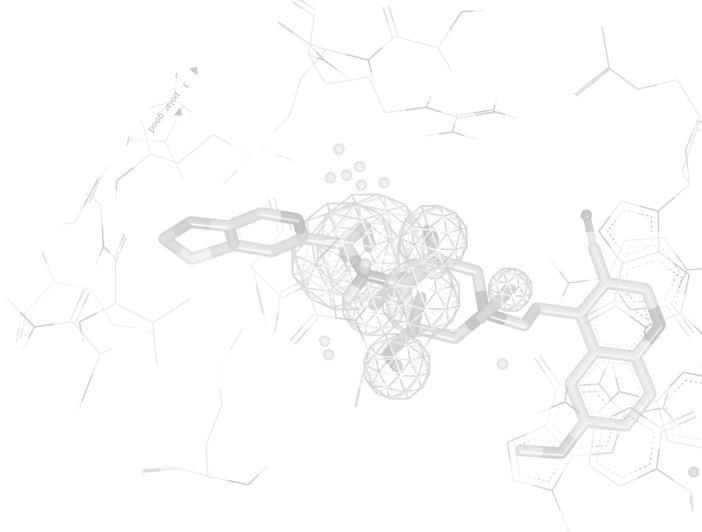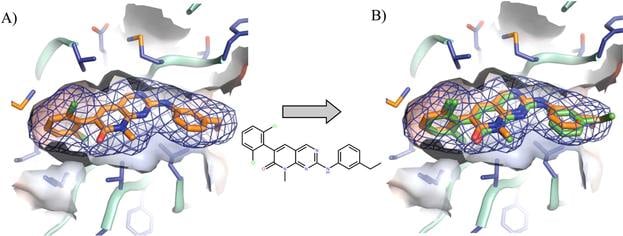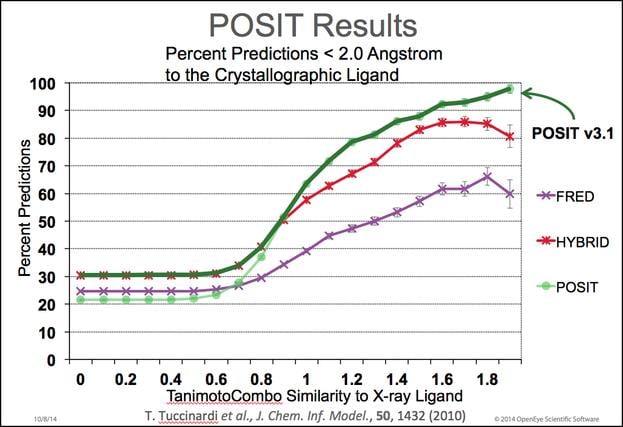
POSIT
POSIT uses the information from bound ligands to improve pose prediction. Using a combination of OpenEye approaches, including structure generation, shape alignment and flexible fitting, a ligand of interest is compared to bound ligands and its similarity to such both guides the nature of the applied algorithm and produces an accuracy estimate. Both 2D and 3D similarity measures are used in this reliability index, which is an industry first.


In addition, when provided with a selection of ligand-receptor complexes from a crystallographic series, POSIT can automatically determine which is best suited to guide the new ligand docking. The performance of this "best guess" structure is very close to that found by using each structure in turn and retrospectively choosing the best result.
When generating only a single pose, POSIT thus only utilizes one structure, providing considerable saving in computational effort for a significant gain in performance. For generating multiple poses, POSIT provides the flexibility to work with just the "best guess" structure or all of the structures for even better quality pose generation.
Webinar: OpenEye's Free energy prediction for drug discovery: Ideas at breakfast, discoveries by lunch
Science Brief: Binding Free Energy Redefined: Accurate, Fast, Affordable
Webinar: ML-Enabled integration of affinity prediction and lead discovery: 3D-QSAR
Conversations at CUP: Geoff Skillman & Charlotte Deane
Resources
Glimpse the Future through News, Events, Webinars and more
News
ROCS X: AI-Enabled Molecular Search Unlocks Trillions
Webinar
Webinar: OpenEye's Free energy prediction for drug discovery: Ideas at breakfast, discoveries by lunch


